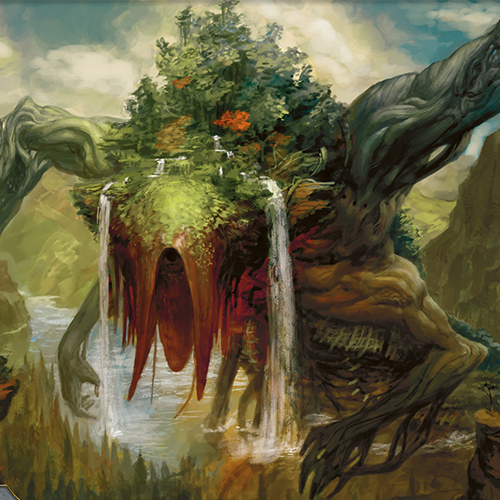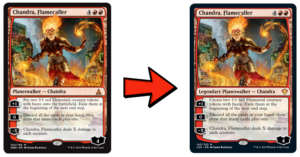
Strixhaven: School of Mages Preorders
March 23, 2021
Sam Jones In-Store Signing
April 9, 2021Magic the Gathering: Legendary Cards
What does it mean to be Legendary in the Magic universe?
The Magic universe is full of fearsome monsters, careless wizards, twisted necromancers, sphinxes with unsolvable riddles, and guardian angels. Some of these characters are unnaturally good at their jobs and have become renowned throughout the Magic multiverse, making them . . . Legendary.
Whether or not you are into the stories of magic, it is impressive how deep some of the lore gets for specific Magic characters. It is also a prime example of how much work goes into the game that has little to nothing to do with the mechanics.
Legendary Cards History
Legendary Rule
The first set to introduce the word “Legendary” onto a magic card, fittingly was named, “Legends.” This was also the very first time the rules of Magic recognized what is referred to as the “Legendary Rule.” Initially, this rule was,
“If a player controls two or more legendary permanents of the same name, then that player chooses one of those permanents and immediately puts the others into their owners’ graveyards, without any other players having the option or opportunity to respond. This does not destroy the other permanent, does not cause them to be sacrificed, and cannot be prevented by being indestructible or having regeneration.”
This is exactly how the rule still works today- however, there are a few extra caveats that no longer apply.
Legendary Card Caveat 1: The Original Add-On
The original rule added on:
“The first player to get a legendary card into play would then prevent any other player from playing the same card if it also happened to be in their deck.”
To clarify the rules used to say that only one copy of any Legendary Card could be in play at a time. For example, if I were to play Chandra, my Legendary Planeswalker, you couldn’t play your Chandra, until you dealt with mine.
This often set the scene during Masques block, in which the player to get Lin Sivvi into play first, prevented their opponent from playing the same card, while you got to tutor all of your best rebels into play.
Legendary Card Caveat 2: Champions of Kamigawa
This rule changed for the first time with the release of Champions of Kamigawa. This amendment to the rule changed how players strategized.
“You are no longer able to cast your Legendary Cards if one of your opponents already controlled a copy of it. As soon as a copy of a card enters the battlefield, all other copies in play are forced to be moved into the graveyard.”
After this rule was added a new, popular strategy arose: playing key Legendary Cards in your sideboard as removal spells.
This new rule plays out a lot better than previous ones. No one wants to be told they can’t play a card.
Legendary Card Caveat 3: Magic 2014
However, the Legendary Rule still had some flaws bringing on another change with the release of the core set Magic 2014. The new rule stated:
“Each player could only control one copy of any particular Legendary Card.”
This would allow for multiple copies of any Legendary Card to be in play if each copy is controlled by a different player.
This is the current rule that still stands today as well. It treats each character’s battlefield as separate, which allows every player to truly get the most out of their deck and utilize the cards that are powerful and valued.
Legendary Card Caveat 4: Historic
Legendary has since then been revisited mechanically. This time, instead of changing the rules the cards changed. As these cards were printed it was known if they were Legendary or not.
Known as Historic, introduced in the set Dominaria, it functioned in many different ways.
- It always triggers wherever a Legendary, Artifact, or Saga spell was cast.
- Alongside its new mechanic, Planeswalker cards, previously considered non-Legendary, were given an upgrade. All Planeswalker cards printed in Dominaria and any future sets are Legendary permanents.
Dominaria was the last time the Legendary mechanic was interacted with, which definitely left its mark on the game of Magic.





